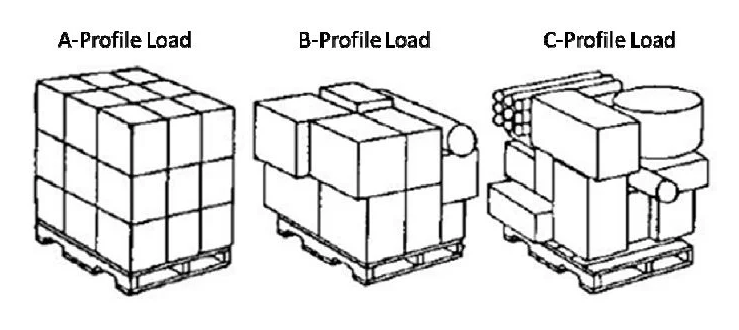- since 1985 -
- since 1985 -
Wrapped film, also known as stretch film or heat shrink film, is a plastic film material used for packaging and protecting goods. It is usually made of plastics such as polyethylene (PE) and has a certain degree of flexibility and elasticity.
The main feature of wrapping film is that it can tightly wrap and secure goods by stretching during packaging, providing stability and protection.
This type of film is usually wrapped multiple times on the surface of the goods, forming a tight packaging layer to ensure that the goods are not damaged, contaminated, or moved during transportation, storage, and handling.
Wrapping film is widely used in the logistics, transportation, warehousing, and packaging industries, which helps to improve the safety, freshness, stability, and packaging efficiency of goods. Since its early introduction in the early 70’s, stretch film has become the most important method of unitizing product loads for transport.
1. Enhance product stability and strength
The uniform and relatively high holding force that stretch film applies to a load.
2. Provides better protection against dust and damage
The protection from dust and damage it provides versus other unitizing methods.
3. Easily identify products while keeping them clean
The optics that allow for customers and shippers the ability to identify the product while also keeping it clean.

Stretch film can be made in two ways:
1. Blow molded film
Blown film is created by forcing molten resin through a circular die, creating a tube, which is “blown some 30 feet high”. The bubble is then flattened and cut into strips that when rolled will produce rolls of flat film.
Advantages of blown film:
(1) Strong puncture resistance
(2) Wear-resistant
(3) High load capacity
(4) Best suited for “industrial” type applications
Disadvantages of blown film:
(1) Low transparency
(2) Unwinding noise is loud
(3) The film is easily broken on high-speed equipment
Blown film is best suited for “industrial” type applications
2. Cast film
This film is created by molten resin is sent through a large extruder which forces a thin layer of film over a large drum that is cooled. The resulting cooled layer of plastic is then cut and rolled into rolls of stretch film.
Today most stretch films are actually multiple layers (co-extrusions) of film each with a specific purpose or feature associated.
(1) Clear optics
(2) Quiet
(3) Consistent thickness control
(4) Tear resistant
Cast film is usually quieter, more transparent, and more glossy than blown film. The stretched film extruded by the casting method usually has higher tear resistance, aesthetic value, and can unfold quietly, which is usually not present in films manufactured by the blow molding method.
Stretch film and machinery vendors have broken pallet loads into 3 distinct classes. A, B or C:

“A” Profile : These loads are typically cubed with no protrusions and relatively clean. These are the easiest loads to wrap.
“B” Profile : These pallets may have an object protruding or do not have clean vertical sides but rather an irregular sides. The puncture hazard may require a better performance film.
“C” Profile : These pallets have a very irregular load with many corners, sharp edges, or protrusions and are difficult to wrap. A higher performance stretch film will be required to handle this type of difficult load.
The temperature of the film during winding can have a significant impact on its performance.
You may be able to use lower grade films in summer
If the ambient temperature drops too much, you will need to use higher grade films in winter.
Is winter packaging done in the cold storage room or near the dock door? The temperature difference between indoor and outdoor should also be considered.
The following are some possible effects of temperature on the use of winding films:
1. Selection of plastic type
Different types of winding films may exhibit different performance at different temperatures.
(1) LDPE & LLDPE
Generally speaking, materials such as low-density polyethylene (LDPE) and linear low-density polyethylene (LLDPE) typically have better tensile properties at lower temperatures and are suitable for packaging frozen goods.
(2) HDPE
High density polyethylene (HDPE) may be more suitable for use at room temperature.
2. Film hardness
At low temperatures, certain types of wrapped films may become more fragile and prone to breakage or tearing.
Therefore, winding films used in low-temperature environments may need to have better cold resistance to maintain their elasticity and stability.
3. Adhesion and self-adhesion
Temperature can affect the viscosity and self-adhesion of the winding film.
At higher temperatures, some self-adhesive wrapping films may become more viscous, which helps improve the stability of the packaging.
But at extreme high temperatures, stickiness may cause the wrapping film to adhere to the goods or become difficult to handle.
4. Elongation
The wrapping film usually needs to be stretched during packaging to ensure that the goods are tightly wrapped. Temperature can affect the elongation performance of thin films.
Higher temperatures may cause the wrapping film to stretch more easily, but be careful not to stretch too much to avoid affecting the packaging effect.
5. Frozen food packaging
For low-temperature goods such as frozen food, it is important to use wrapping film with good cold resistance to ensure that the film remains elastic and stable at extremely low temperatures, and to protect the goods from damage under freezing conditions.
6. Heat shrink film
This type of film usually needs to be heated at a certain temperature to tightly wrap it on the surface of the goods. Temperature control is crucial for the use of heat shrink film to ensure that the film can be uniformly tightened on the goods.
Temperature has a significant impact on the use of winding film, and users should choose suitable film types and usage conditions based on their actual situation to ensure the quality of packaging and protection of goods.